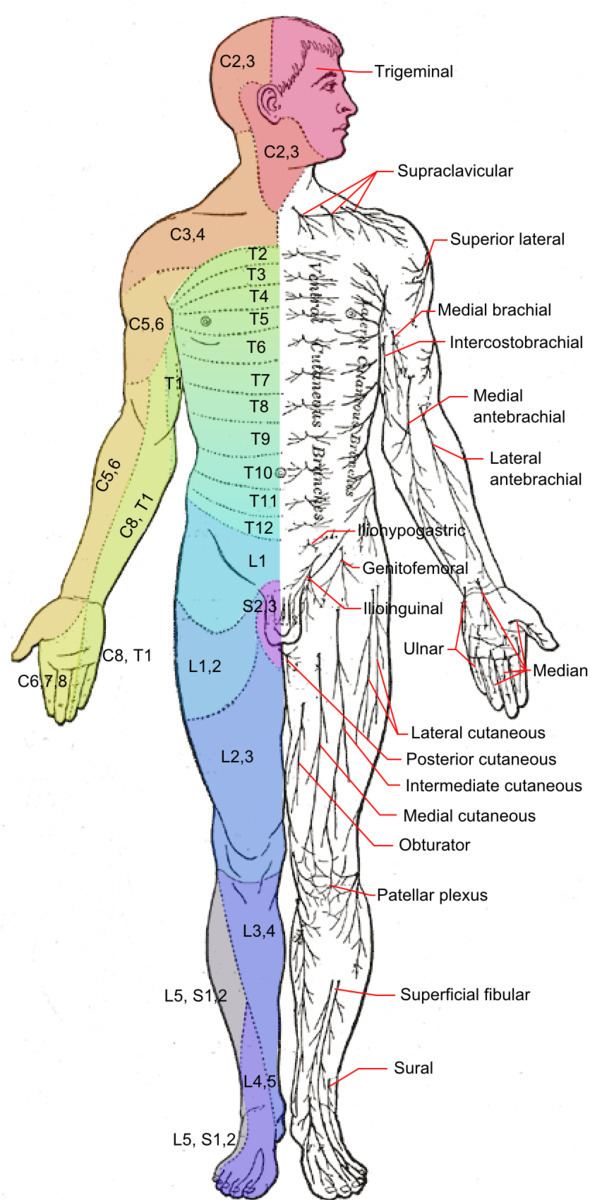 | ||
Human anatomy
In human anatomy, cutaneous nerves are responsible for providing sensory innervation to the skin. They are generally thought of as sensory-only nerves, but they may provide motor innervation to structures in the skin, e.g. sweat glands.
There are many cutaneous nerves in the human body, only some of which are named. Some of the larger cutaneous nerves are as follows:
Upper body
Lower body
Other
References
Cutaneous nerve Wikipedia(Text) CC BY-SA
